Women of the World
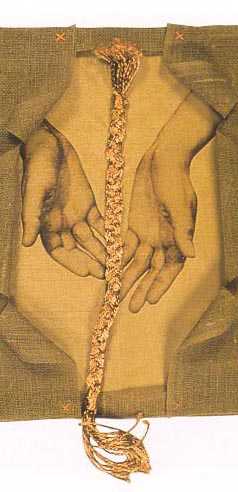
Curator's Statement
During the 1960s and early 70s, my transition into adulthood coincided with the birth and growth of the women's movement in the United States. The huge social changes gained in that period have given women an opportunity for independence that is exhilarating, not only for those of my generation. A sense of infinite possibilities coupled with the freedom to express them have made women a force to be reckoned with.
My pursuits as an artist, veteran university professor, global traveler, and activist led me to pose a universal question to women artists all over our shrinking world: what image represents "woman?" It was my intention in this project to preserve the diverse styles and traditions of each country, with the inevitable influences from other countries. I did not judge the works by the insular standards of the Western contemporary world. Nor did I seek to find the most famous woman artist in each country. Although many are well known and have shown internationally, others are not well known at all. They are women artists pursuing their work, seriously, without fame or major recognition. This project was designed to be expansive, not restrictive. I wanted to underscore the differences in how art is made and perceived.
This project is neither a geography lesson nor a demonstration of my ability to make connections with individuals and institutions. It is an expression of the human spirit at the beginning of the 21st century, from people whose voices have rarely been heard. Now they finally get to write their own lyrics.
- Claudia DeMonte, Curator
**web note: due to online constraints, we are only able to exhibit 30 of the 177 works originally featured in this exhibit.

Afghanistan
Ghatol
I raise the cry of the forgotten and oppressed women of Afghanistan, but I am unable to depict the grave and horrible plight of our women in my painting.
I portray an Afghan widow and her two children begging in the ruined city of Kabul. Kabul is called the City of Beggars. Hundreds of women, children, and men have no other option but to hope for alms in the streets. Throughout Afghanistan the fundamentalists - with their barbaric rule - subject thousands of people to social scourges.
A few weeks into this painting, I lost my dear and only brother when the Taliban tortured and killed him. In the hell named Afghanistan, life for all people is full of tragedies and miseries.

Antigua
Heather Doram (B. 1953)
My art, like the bark paintings that inspire me, is layered with multiple meanings. It is like the concentric circles of the "sacred water holes," representing the continuous cycle of life.
I work with felt, an ancient yet modern material. My art tool is the sewing machine. Stitches create lines and add texture and body to the felt. Stitches and beads are part of my visual vocabulary; they serve as ornament and structure.
My work presents emotional landscapes that document my life and that of Caribbean women. I intend to provoke my viewers, leading to moments of connection.
Heather Doram has been in solo and group exhibitions in Anigua and abroad. In 1995 her work represented the Savannah College of Art & Design in the Venice Biennial in Italy. Doram designs and constructs costumes for Antigua's Carnival, and she designed Antigua's national dress.
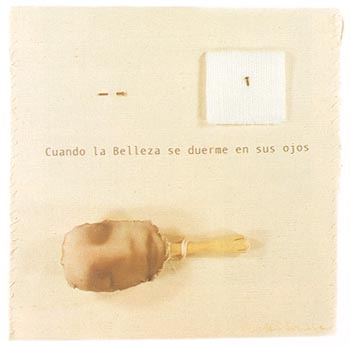
Argentina
Cecilia Mandrile (B. 1969)
My work is about human fragility and its strategies for reconstruction. After living outside my country, I have noticed how women preserve the memories of injustice and tragedy; they are the survivors of the painful circle of history. When Beauty falls asleep in their eyes is dedicated to those who try to mend the wounds of the world.
Cecilia Mandrile exhibits her work in national and international exhibitions, including the United States. She has taught drawing, printmaking and design at universities and private schools in Argentina and the United States.
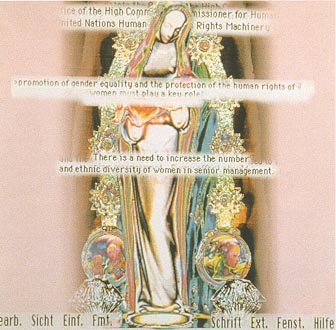
Austria
Reingard Klingler
Although Vienna, as the site of the United Nations Conference Center, seeks to portray a cosmopolitan and open social and cultural image, there are, nevertheless, strong traditional beliefs connected with women and their social roles. The Madonna in my work is sold near Salzburg for home prayer services. Her feminine posture is a visual icon in Austria's somewhat secular culture. It communicates that caring, nurturing and modesty are "feminine" virtues. The figure's place in religion makes it impervious to social critique. This icon defines qualities as "feminine" - qualities vital for Western capitalist societies but with the lowest remunerative and social prestige.
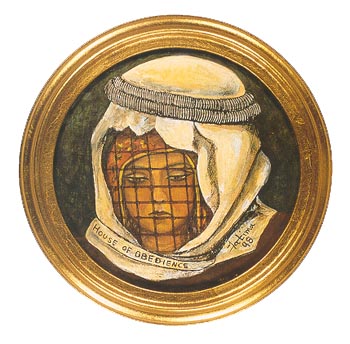
Bahrain
Fatima Fakhro (B. 1943)
House of Obedience represents women in Arab society. Women are trapped in the cage of men's expectations. They are expected to obey harsh rules set upon them by a male-dominated society.
Fatima Fakhro was raised under her country's strict Muslim moral codes. In 1980 she came to the United States to study at the Maryland Institute College of Art. For the first time she was independent and could express herself freely.
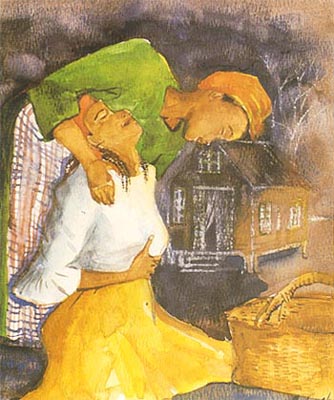
Belize
Rachael Heusner-Superville
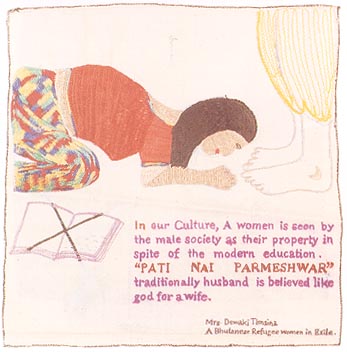
Bhutan
Dewaki Timsina
Dewaki Timsina lives in a Bhutanese refugee camp in Nepal.

Cuba
Yasbel Maria Pérez Domínguez
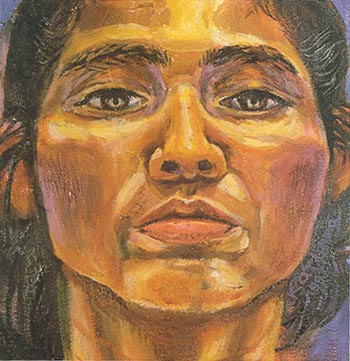
El Salvador
Karlisima
This painting represents the way I see myself: as an introspective woman, meditating, with a wisdom gained through experience. I feel strong and proud to represent El Salvador and my Mayan heritage through my work.
Born in San Salvador in 1970, Karlisima came to the U.S. with her siblings in 1984. She attended Washington University in St. Louis, majoring in painting. A winner of several awards and a participant in many group shows since 1991, she teaches art, paints on commission, and is employed as a copyist by the National Gallery of Art, Washington.
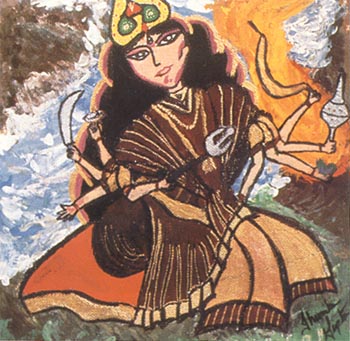
India
Jhumka Gupta
A woman can be as subtle as water, as raging as fire, as fruitful as the earth, or as encompassing as air. The Hindu goddess Durga symbolizes strength. Her many arms and third eye represent divine feminine power. The objects she holds illustrate aspects of femininity.
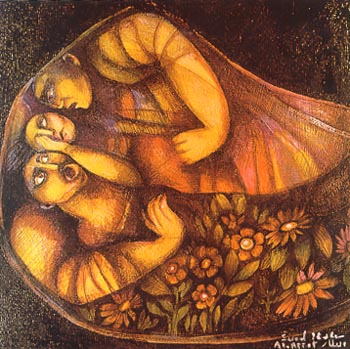
Iraq
Suad Al-Attar
My paintings are archives of my emotions that stem from dreams, myths, sensuality, and taboos. Each painting is a mirage of birth or death. I want my paintings to trigger passion, fear and mystery.
Suad Al-Attar lives in London. She has had solo shows in London, Los Angeles, Baghdad, Beirut, Paris, Kuwait and Washingotn, D.C., and has participated in group exhibitions throughout the world. Her work is in private and public collections. Among her prizes is the gold medal and first prize of the International Biennial of Cairo in 1984. UNICEF's New Year's cards featured her work in 1975 and 1993.
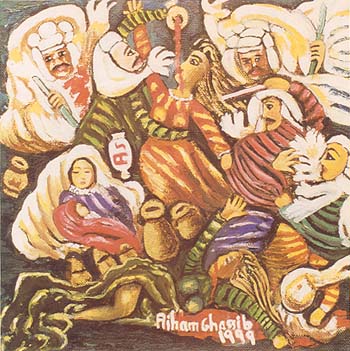
Jordan
Riham Gahssib
This painting is called The Honor Killing. Another century has ended, yet women are still subjected to torture, suffering, oppression, abuse and honor killings.
Although she has a profound appreciation for abstract and contemporary art, Riham Gassib seeks to forge a new style rooted in Jordanian life. She has exhibited in Jordan, the United States, and Europe.
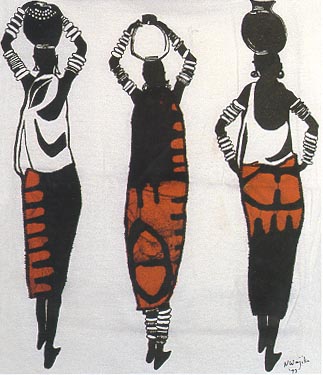
Kenya
Kenyan women have many burdens to carry, yet we walk tall.
Naomi Wanjiku grew up in Kenya, immersed in local art. She helped her grandmother create beautiful baskets; her neighbors design, build and color their homes; and local weavers make clothes. Today, she merges contemporary Western techniques with traditional African techniques. She is the president and creative director of Wanjiku Designs, Dallas.
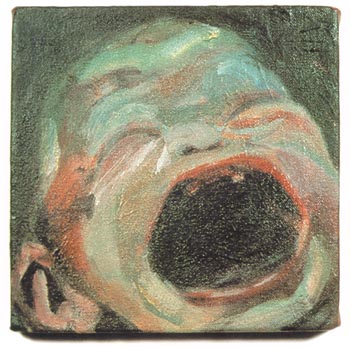
Korea (South)
There is a big, burning hole in my heart. Whenever worries and anxieties seep into my mind, I bundle them into tight balls and throw them into the flames. This transformative process is at the core of my spiritual and artistic practices.

Kuwait
Thuraya Al-Baqsami
In Waiting, six Kuwaiti women hope for the return of their husbands, sons, and brothers who were taken hostage during the brutal Iraqi invasion of Kuwait in 1990. The women reflect sadness, worry, anger, and confusion. The white spots in the background are the women's dreams. Their light blue clothes are typical of what women wear when they pray. Light blue also represents innocence.
Thuraya Al Baqsami ia a journalist and illustrator in Kuwait. She has written short stories, children's books and art criticism. She has had thirty-three solo shows, and has been in fifty group exhibitions, international biennials, youth festivals, and women conferences in such cities as Washington D.C., Beijing, Cairo, Moscow, London, and Paris. She has won prizes, including the Golden Palm Leaf from the GCC Biennial in Riyadh (Saudi Arabia).
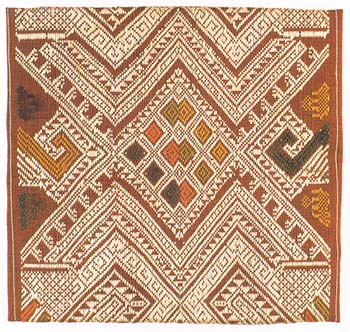
Laos
Anonymous
The Embassy of Laos donated this anonymous piece.
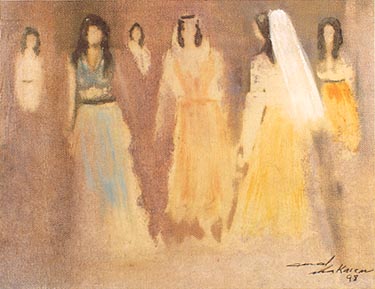
Lebanon

Libya
Merim Abani
Art is a place
Place is environment
Environment is motivation
Motivation is artwork.
Born in Tripoli in 1973, Merim Abani graduated from the National Art Academy in 1995 and had her first solo show at Gallery de Villa in 1996. She has participated in many joint exhibitions in Libya and beyond. Abani's work falls somewhere between observing nature and experimenting with traditional forms. She depicts her subjects in a traditional way, but image and message are not the same thing.
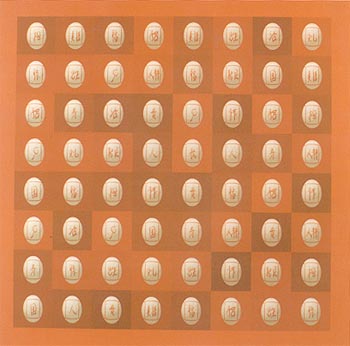
Malaysia
Loss of ethnic identity results from the inevitable assimilation to an adopted environment. A new identity can be gained, however, through reinforcing ethnicity in domestic life.
Born in Kuala Lumpur, Jun-Ann Lam now lives with her husband in Melbourne, Australia. She makes installations at her home studio and is a freelance graphic designer.
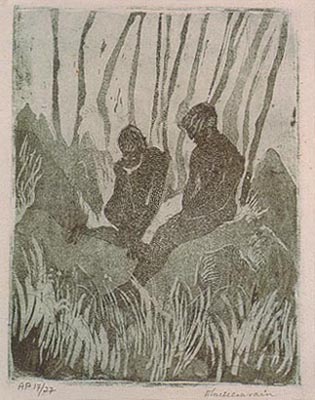
Mauritius
The themes in my artwork are reincarnation, signs, and symbols from Hindu mythology.
Neermala Luckeenarin does etchings, woodcuttings, and drypoint. She teaches printmaking at the Mahatma Gandhi Institute. Luckeenarain has participated in printmaking exhibitions and has published articles and poems. Her exhibition on the life and philosophy of Buddha toured Mauritius for six months.

Norway
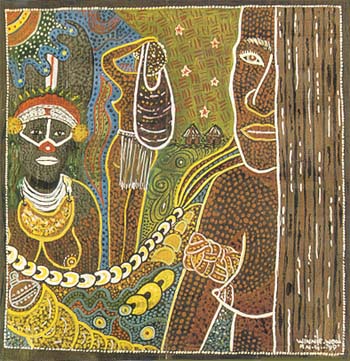
Papua New Guinea
Winnie Weoa
This shows the daily life of village women in the highlands of Papua New Guinea. Their daily household duties include tending to gardens and looking after pigs. For special occasions or ceremonies, such women are seen in traditional finery.
Winnie Weoa was born in Enga and Hagen, Highland Province. She turned to drawing and painting at an early age, realizing that her hearing and speach disabilities left her with limited opportunities. Weoa realized that she had an affinity for art, studied fine arts, and makes her living as a freelance artist.

Portugal
My theme is woman as the ultimate survivor. In my narrative paintings I record in metaphorical images personal reflections, social considerations, and random, unexplained occurences. I also highlight the relationship between the illusion of reality and the physical world by combining flat painting surfaces with three-dimensional objects.
Margarida Kendall's work has appeared in galleries and museums in Washington D.C., Baltimore, New York, Philadelphia, and Chicago. In Portugal she had a solo show at the Gulbenkian Center for Modern Art. She is an associate professor of studio art at George Mason University.
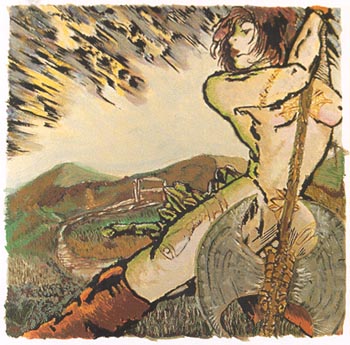
Puerto Rico
Born in San Juan in 1960, María de Mater O'Neil holds a BFA from Cooper Union, in New York. She has worked as a graphic designer and as webmaster of the e-zine El cuarto del Quenepón. O'Neil has won a number of major awards, including the prestigious grand prize at the III Bienal Internacional de Pintura in Cuenca, Ecuador, and the Federal Design Achievement Award in her home country. The most recent of the numerous exhibitions in which she has taken part was "Litografia Argentina Contemporanea" at Buenos Aires' Museo Eduardo Sivori in 1999. In that same year, Rutgers University invited her to become artist-in-residence at the Center for Innovative Printmaking and Papermaking.

Rwanda
My piece contains a banana tree, a house for hospitality, a woman, and children of prosperity. The woman is the soul of my home. When she has visitors she offers a local drink made of banana or sorghum. She knows everything in the house and takes care of everyone.
Claudia Barasebwa combines a career in environmental matters with an interest in the arts.
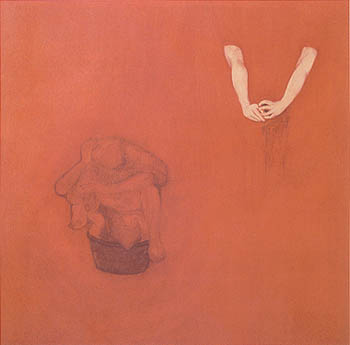
Scotland
My work is inspired by emotions, many of them unmentioned or repressed. I am concerned with identity, and I make use of my personal history and gender issues to reflect the difficulties and pressures within society. Recognizable details and suggestive fragments of private worlds become reference points for the viewer. They convey contrasting and incompatible desires and fears: passion and aggression, seduction and rejection, absence and presence.
Helen Graham's art has appeared in group exhibitions in Scotland and abroad, including Shetland, Germany, and Spain. Graham has had solo shows in Scotland and Barcelona. She teaches art and design and is a social care worker for adults with learning difficulties.
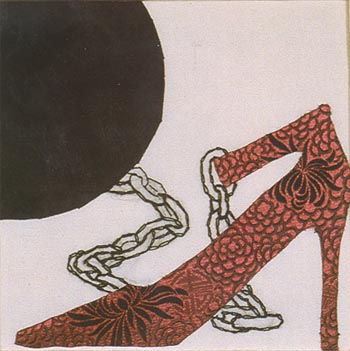
Thailand
My concept is female restriction in Thailand.
Worapanit Jiya-amondej received a degree in art from Chulalongkorn University.
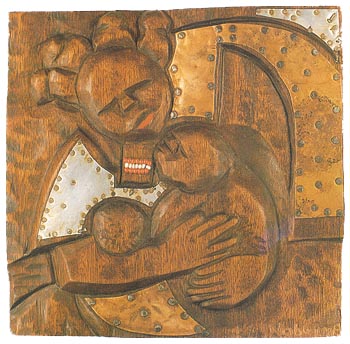
Uganda
Maama: in the Badanda culture a woman is expected to be a mother to all. Even young girls are called maama, or "future mothers." As they grow older they become role models who are expected to be tender, loving and caring.
Lilian Nabulime is a lecturer at the Sculpture Department of Makerer University. She has participated in solo and group exhibitions in South Africa, the United States, the Netherlands, Belgium, Scotland, and Germany, among others. In 1997 she received a fellowship to the Glasgow School of Art.

Venezula
I love exploring the figure by creating disproportionate appearances with deep expressions, textured marks and movement. Stemming from my expressions, attitudes, feelings, dreams, perspectives, and frustrations, the figures then develop a unique history.
Aurora Rincon was born in Venezuela and is now a United States citizen. Her work has appeared in the Cultural Center of the Embassy of Venezuela, the Corcoran Gallery of Art, World Bank and other galleries in the Washington D.C. area.
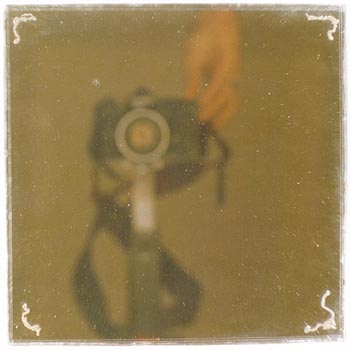
Yugoslavia
Sculptor Nina Kocic had her first solo show in Belgrade in 1992. Kocic won an award for an experimental video at the Belgrade Short Films Festival in 1992. She received a grand prize for sculpture at the Biennial of Young Artists in Vrsac.

Charles Schwab
The Charles Schwab Corporation, through Charles Schwab & Co., Inc. (Schwab), U.S. Trust Corporation, CyberTrader, Inc. and its other subsidiaries, provides securities brokerage and related financial services for 8.0 million active client accounts with $753.5 billion in assets. During the third quarter of 2002, a total of $11 billion in net new client assets were added and 160,000 new client accounts were opened. We serve domestic and international individual investors, independent professional money managers, institutions, broker-dealers, corporate 401(k) plan sponsors and third-party administrators through 394 Schwab Investment Centers and 34 U.S. Trust offices. Schwab delivers an innovative model of full-service investing designed to empower the individual investor. As the investing landscape has evolved, Schwab has been a catalyst of change, improving access to information, education and new products and services.

First Data
First Data Corp. (NYSE: FDC), with global headquarters in Denver, helps power the global economy. As a leader in electronic commerce and payment services, First Data serves approximately 2.8 million merchant locations, 1,400 card issuers and millions of consumers, making it easy, fast and secure for people and businesses to buy goods and services using virtually any form of payment. With 28,000 employees worldwide, the company provides credit, debit, smart card and stored-value card issuing and merchant transaction processing services; Internet commerce solutions; money transfer services; money orders; and check processing and verification services throughout the United States. First Data also offers a variety of payment services in the United Kingdom, Australia, Canada, Japan, Mexico, Spain, the Netherlands, the Middle East and Germany. Its Western Union and Orlandi Valuta money transfer networks include a total of approximately 135,000 Agent locations in more than 190 countries and territories.

American Association of University Women - California (AAUW California)
American Association of University Women - California (AAUW California)
The American Association of University Women (AAUW) founded in 1881, is the nation's leading advocacy organization for education and equity for women and girls. Within California AAUW is represented by over 23,000 members in 168 communities. AAUW's mission is to promote equity for all women and girls, lifelong education, and positive societal change. AAUW actively lobbies at the local, state and national level for women's and education issues. In California AAUW sponsors Tech Trek, a summer math/science camp for 7th grade girls on five California college campuses. The AAUW Education Foundation (EF) funds post graduate studies for women and research on topics relating to education for women and girls. EF is the nation's oldest and one of the largest source of non-institutional funding of graduate education for women. The AAUW Legal Advocacy Fund (LAF) provides financial and emotional support for women seeking redress in the courts for sexual discrimination in academia.

Ginetta Sagan Fund
For more than three decades, the late Ginetta Sagan, recipient of the 1996 Presidential Medal of Freedom, fought for the lives and rights of prisoners of conscience throughout the world. A tireless crusader and eternal optimist, Ginetta¹s passionate dedication inspired generations of human rights advocates. In honor of her humanitarian achievements, Amnesty International USA created the Ginetta Sagan Fund in 1994 to address the needs of women and of children. The Ginetta Sagan Fund and annual Award provide recognition of and assistance to a woman or women doing effective work to protect the dignity, liberties and lives of women and children.
The Ginetta Sagan Fund and Award enables many other women to follow in Ginetta¹s footsteps, strengthening organizations worldwide which are dedicated to the protection of the lives and rights of women and of children.

Girl Scouts
As the local organization chartered by the Girl Scouts of the USA we provide support for Girl Scouting and Girl Scout Troops in the Bay Area. With a diverse membership of more than 29,000 girls and nearly 14,000 volunteers, Girl Scouts of San Francisco Bay Area is the largest organization in the community with
a commitment to girls.

Global Fund for Women
The Global Fund for Women is a nonprofit grantmaking foundation that supports women's rights organizations in every part of the world. It is the largest grantmaking foundation in the world that focuses exclusively on international women's rights. The Global Fund for Women envisions a just and democratic world where women and men participate equally in all aspects of society. Since 1987, The Global Fund has given $25.5 million to seed, strengthen and link over 2,000 groups in 161 countries.

International Diplomacy Council
The International Diplomacy Council is a 50-year-old nonprofit organization. International Diplomacy Council's mission is to build global understanding through direct citizen-to-citizen exchange- citizen diplomacy. Receiving 1,500 emerging foreign leaders a year, with such past visitors as Tony Blair, Hamid Karzai, Atal Behari Vajpayee, Kim Yong-Sam, and Gerhardt Schroeder all before their rise to prominence, gives the Bay Area community a truly unique opportunity.

International Institute of Education
The Institute of International Education (IIE), founded in 1919, is the United States' most experienced non-profit organization for international education and cultural exchange. IIE has administered the Fulbright Program on behalf of the U.S. Department of State since its inception and designs and implements over 250 other programs of study and training for students, educators, young professionals and trainees from all sectors with funding from government and private sources.

Junior League of San Francisco
The Junior League of San Francisco, Inc. is an organization of women committed to promoting volunteerism, developing the potential of women, and improving communities through the effective action and leadership of trained volunteers. Its purpose is exclusively educational and charitable. The current focus area for disbursement of grants and volunteers is Education K-12.

League of Women Voters
The League of Women Voters of San Francisco, a non-partisan multi-issue organization, encourages the informed and active participation of citizens in government, works to increase understanding of major public policy issues and influences public policy through education and advocacy. The League offers a variety of free and unbiased election resources to the citizens of San Francisco. Voter Education projects include our Voters Guide, Smart Voter website (www.smartvoter.org), Target Neighborhood Project, candidate forums, speakers bureau, and televised ballot measure debates. The League welcomes everyone to membership.

Mills College
Founded in 1852, Mills College is the oldest women's college west of the Rockies. The beautiful 135-acre Oakland campus now has one of the most diverse liberal arts college student populations in the country. A pioneer in education, Mills was one of the first liberal arts colleges to offer a degree in modern dance, and the first women's college to offer a computer science major. Its Upward Bound program, also one of the first, is now the largest of its kind. Mills' fine coeducational graduate programs include art, dance, music, and creative writing, as well as computer science, education, business, biochemistry/molecular biology, and a post-baccalaureate pre-medicine program. Mills alumnae in the fine arts include artists Jennifer Bartlett and Elizabeth Murray, composers Elinor Armer, Janice Giteck and Rebeca Mauleon, and choreographers Trisha Brown and Molissa Fenley.

Northern California Council Women in the Arts
The Northern California Council (NCC) is dedicated to promoting women in the arts. NCC is one of 28 state committees formed in association with the National Museum of Women in the Arts (NMWA). The women - and men - of the NCC have diverse professional backgrounds. We are united by an appreciation for art and a desire to develop greater awareness of the work of women artists from northern California.
Now in its second decade, NCC remains committed to bringing regional and national recognition to northern California women artists and encouraging appreciation of their work. The NCC has a multilevel art education program and has sponsored exhibitions featuring northern California women artists. The group has also organized visits to private collections and to artists' studios.

Soroptomists
Soroptimist International is a worldwide volunteer service organization for women in management and the professions, working through service projects to advance human rights and the status of women. Soroptimist International of the Americas is part of Soroptimist International, comprising almost 100,000 members in about 120 countries around the world. Soroptimist International of San Francisco was founded in March 6, 1922, as the second club in the organization.

Presdio Trust
Created by Congress in 1996, The Presidio Trust is a federal agency with the mission of preserving and enhancing the Presidio's natural, cultural, scenic and recreational resources for the American people in perpetuity while achieving long-term financial sustainability. Six presidential appointees and the Secretary of the Interior or his/her designee sit on the board of directors and oversee management of 1,100 acres, 469 historic buildings, a 300-acre historic planted forest, rare plant and wildlife species, and other natural and cultural treasures.

UCSF National Center of Excellence in Women's Health
The UCSF Center of Excellence in Women's Health is proud to be one of the National Centers of Excellence transforming the traditional Academic Medical Center from a fragmented set of activities into providing women with comprehensive care in a highly individualized and compassionate environment.
UCSF CoE is advancing the field of women's health by:
- Providing comprehensive and state-of-the-art health care for women
- Promoting an extensive women's health research agenda
- Building partnerships and links with community groups and organizations
- Educating tomorrow's health care providers about the principles of women's health through professional education programs
- Paving the way for women to hold key leadership positions

United Nations Association
The United Nations Association of San Francisco (UNS-SF) is the San Francisco chapter of the United Nations Association of the United States of America (UNA-USA) which is a national, nonpartisan, and nonprofit organization dedicated to enhancing US participation in the United Nations system and to strengthen that system as it seeks to define and carry out its mission. The UNA-SF's specific projects are focused on creating a Culture of Peace in the 21st Century through education, business, and the arts.

Women's Intercultural Network
WIN is an international non-profit organization based in San Francisco, CA, that links women and girls across cultures, globally and in US communities. WIN creates settings and opportunities for women and girls to come together to exchange ideas and skills in professional, economic, and political leadership. We refer to these exchanges of women's delegations as "CALLING THE CIRCLE OF WOMEN FROM US, UGANDA, JAPAN AND AFGHANISTAN". WIN also coordinates the California Women's Agenda (CAWA) to implement the Beijing Plan of Action.

Women's Forum West
Women's Forum West, as an affiliate of the International Women's Forum, fosters association and communication between preeminent women leaders in multiple professions around the world.

Women in Technology International
WITI is the premier association for women who consider technology central to their businesses, careers, and professions. We have been building the brand and raising consciences for 13 years, and WITI is the largest professional trade association in the world dedicated to advancing women in technology. WITI provides access to a fast-growing worldwide network of over 75,000 women. WITI empowers women to use technology to succeed. WITI inspires students to choose careers in technology. WITI encourages young girls to think and learn about technology. WITI offers technology information, services and products to women worldwide. WITI creates platforms to highlight members' talents and accomplishments.

World Affairs Council of Northern California
World Affairs Council of Northern California
The World Affairs Council was founded in 1947 out of the interest generated by the founding of the United Nations in San Francisco in 1945. With over 10,000 members, we are the largest international affairs organization on the west coast. In addition to our headquarters in San Francisco's Union Square, we serve members through chapters in Contra Costa, Marin, and the Peninsula. We are the largest affiliate of the national World Affairs Councils of America.

YMCA
The YMCA of San Francisco, founded in 1853, is a member-supported organization dedicated to serving the diverse communities of the Greater Bay Area. We are committed to building strong kids, strong families and strong communities through our 15 sites in five counties. With a $48 million 2000/01 budget, we'll involve more than 100,000 people of all ages this year, including 40,000 youth and teens.
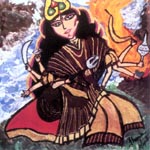
Exhibition Themes
A guiding concept for the International Museum of Women is to offer educational and entertaining programs and exhibits for adults, youth and children alike. Written into its mission statement, I.M.O.W. seeks to "explore the history of women and contemporary gender issues, and, through education, serve as a catalyst for continued social, cultural, economic and political change."
So, it is not surprising that a great deal of thought has gone into the design of educational activities around the Women of the World exhibit. At the beginning of the exhibit area, the viewer is introduced to five themes that reflect aspects of the life experiences of many of the world's women. We hope these themes will raise viewer consciousness on critical women's issues, provide background for the imagery, and encourage a deeper understanding of similarities and differences among women's experiences globally. The five themes are:
1. REFLECTIONS ON THE FEMALE IDEAL
2. MAKING WOMEN'S INVISIBLE WORK VISIBLE
3. WOMEN'S RIGHTS ARE HUMAN RIGHTS
4. CIRCLE OF LIFE
5. CELEBRATING WOMEN'S POWER
1). REFLECTIONS ON THE FEMALE IDEAL:
Societies often judge women by how they measure up to specific cultural expectations of female image and behavior. Some exhibit artists engage in a social critique of these ideals by bringing attention to centuries-old pressures on women to attain a culturally specific yet often impossible physical ideal. Their imagery prompts us to question how women continue to submit to various methods of disfiguration and even mutilation in the painful pursuit of "beauty." Others depict women in postures of submission as a result of societal pressures to repress outspoken views and to display modesty. Some images speak of rude awakenings when powerful fairytales about "beautiful princesses" are shattered by everyday realities.
2). MAKING WOMEN'S INVISIBLE WORK VISIBLE:
Artists' images illuminate women's unpaid work at home, in agriculture, and in the production and selling of items for every day use. Although it is estimated that women's work produces up to a third of the global GDP (Gross Domestic Product), these forms of labor often remain unnoticed by those who compile statistics. Women's household work, parenting, volunteer and mutual aid work, care for the old and sick, home-based production, subsistence agriculture, and casual trading, are all essential ingredients of the glue that holds family and community together.
3). WOMEN'S RIGHTS ARE HUMAN RIGHTS:
In the past few decades there has been recognition that the practice of human rights is not gender neutral - that beyond political and civic rights there are social and economic arenas where women's rights have been ignored. Through text and image, these artists illustrate some previously overlooked discriminatory practices, such as a disregard of women's rights within domestic life, the violation of women's rights in wartime, the denial of equal access with men at all levels of education, and the right to an equal voice in decision making.
4). CIRCLE OF LIFE:
The circle of a woman's life is marked by stages that, though varying widely, often contain concerns and emotions common to all women. On being born female, a woman is apt to be looked on and treated differently than her brother. Puberty marks her passage from childhood to womanhood, a magical time that in some cultures is celebrated with special rites. In many cultures marriage follows and is seen as a sign of her full entrance into adulthood. Motherhood may ensue, giving her a source of pride and acknowledged power. Once past her childbearing years, a woman's advice may be sought as a venerated elder. With luck, this final stage allows her time for introspection, self-expression, and special friendships.
5). CELEBRATING WOMEN'S POWER:
We often judge women's power by noting their growing presence in decision-making positions in government, business, the media, and sports. The images in this exhibit reveal other sources of women's influence. Women are honored for their perceived special link to "mother nature" which historically has granted them important roles as managers and protectors of their environment. The influence of specific female fertility deities, like the Indian goddess Durga, is portrayed as illustrative of this female power to affect the earth and elements. Artists also pay tribute to women's vital work in gathering, cultivating and preparing the foods consumed for the perpetuation of life. They depict women's efforts to confront violence and to defend the less powerful. Above all, artists honor women's role as preservers of cultural traditions and as creators and nurturers of life and art.
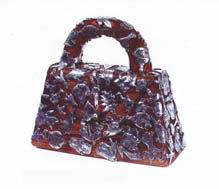
Claudia DeMonte: Curator
Professor of Art, University of Maryland
DeMonte has had over 50 one-person and 300 group exhibitions of her work, which deal with the roles of women in contemporary society. She has exhibited and lectured extensively in museums and galleries in the U.S., as well as internationally including Thailand, Saudi Arabia, Japan, Italy, Bulgaria, Jamaica and France. Her work is in the collection of numerous public and corporate collections including the Indianapolis Museum, the Corcoran Museum of Art, the Stamford Museum, the Queens Museum, Exxon, Prudential and Siemens. She is presently serving a three- year term as a juror for the Fulbright Fellowships in Sculpture and Installation.
DeMonte has been awarded public commissions from the New York City Department of Cultural Affairs, the New York City School Constructions Authority, the New Mexico State Arts Council and the Brooklyn Public Library System. She has received a New York State Foundation on the Arts Fellowship in Sculpture, and awards from the Ariana Foundation and the Agnes Gund Foundation. DeMonte also collects, lectures and writes on Outsider Art. Her collection has toured Scandinavia and Europe. She has co-authored essays for the catalogue Outsider USA and the Japanese magazine Art Visions. An avid traveler, DeMonte has been to over 70 countries, often making collaborative projects with local women artists. Most recently she worked with the Tibetan tent makers in Lhasa. Presently, she is working on a Global Woman's project involving one-woman artist in each of the world's 185 countries.
Female Fetishes and Implements
An exhibition of the current artwork of Claudia DeMonte. On display will be Female Fetishes: everyday actual size wooden women's objects usually associated with 'women' covered with 29 different pewter 'milagros' nailed into each piece and Female Implements: a series of 15 bronze wall sculptures that are influenced by Cycladic Art and the fact that women are perceived as caretakers 'serving' others.
FEMALE FETISHES
This body of work is based on my Italian Catholic upbringing. When praying for something specific an image of the item sought was often nailed to an object or the wall. In Italy, Brazil, Mexico and in most Catholic countries churches can be seen heavily decorated with wax, silver and paper cut images the faithful bring in hopes of having their wishes granted. These objects are often referred to as 'milagros' (miracles).
For the last twenty years the issue of women in today's society has always been central to my work. Using everyday items thought of as being 'female' I have taken these objects as female icons and densely covered them with pewter images from my personal iconography.
These pieces were fabricated in Thailand where I worked with local woodcarvers and cast the pewter milagros at the largest pewter foundry in the world. These pieces were shipped back to the U.S. where I hand hammered each milagros with brass brads into the wooden bases.
FEMALE IMPLEMENTS/SERVING OBJECTS
This series of 15 bronze wall sculptures are influenced by pre-history and the elongated forms of Cycladic Art.
Although somewhat autobiographical, each head having my own ponytail, the body of each sculpture turns into serving piece and/or tool. These works show that women serve/take care of/fix the world.

